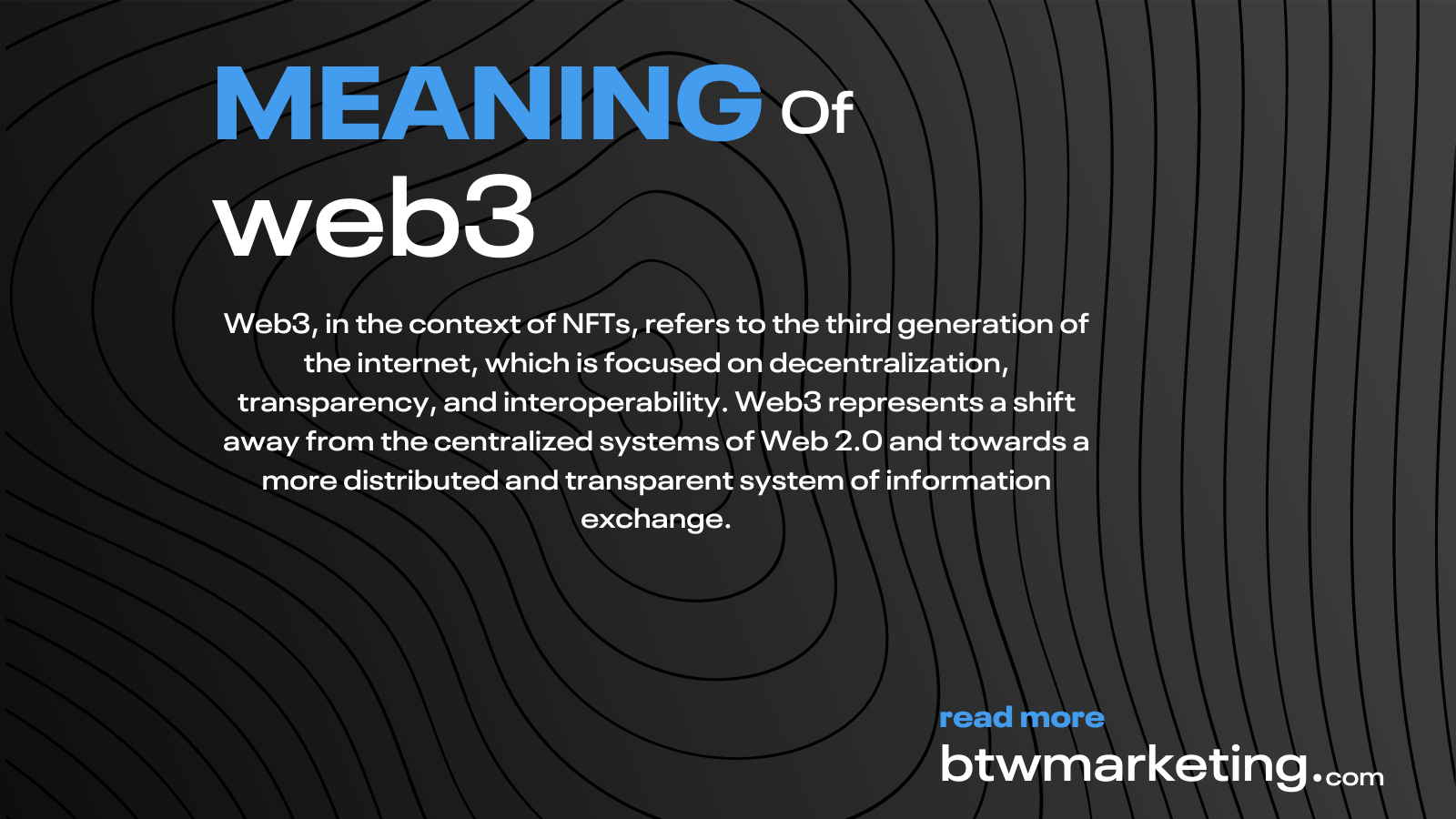Web3, in the context of NFTs, refers to the third generation of the internet, which is focused on decentralization, transparency, and interoperability.
Web3 represents a shift away from the centralized systems of Web 2.0 and towards a more distributed and transparent system of information exchange.
In the context of NFTs, Web3 technology allows for the creation, ownership, and exchange of unique digital assets through blockchain technology. NFTs are created using smart contracts on a blockchain platform, which enables a decentralized and transparent ledger of ownership and transfer.

Web3 technology also enables the creation of decentralized marketplaces where NFTs can be bought and sold directly between buyers and sellers, without the need for intermediaries. This allows for greater transparency and efficiency in the buying and selling process.
Overall, Web3 technology is integral to the development and growth of the NFT market, enabling a new era of digital ownership and exchange. By leveraging decentralized technologies, Web3 is helping to create a more equitable and transparent digital economy for creators, collectors, and investors alike.
You remember? Web1, web2 and compared to web3?
Web1: In the early days of the internet, websites were largely static and one-way, with information flowing from the website owner to the user. Users could browse information and consume content, but there was little opportunity for interaction or collaboration.
Web2: With the rise of social media and user-generated content, the internet became more interactive and collaborative. Web2 introduced platforms like Facebook, Twitter, and YouTube, where users could create and share their own content, connect with others, and participate in online communities.
Web3: Web3 takes things a step further by leveraging blockchain technology to create a more decentralized and transparent internet. With Web3, users can own and control their own data and digital assets, participate in decentralized applications and protocols, and engage in peer-to-peer transactions without the need for intermediaries. In the context of NFTs, Web3 enables the creation and ownership of unique digital assets, with ownership recorded on a decentralized ledger for greater transparency and security.
So, a simple example of Web3 compared to Web2 and Web1 might be:
Web1: You visit a website to read a news article. The information flows one-way, from the website to you.
Web2: You log in to your social media account and create a post. You share your thoughts and connect with others, creating a two-way flow of information.
Web3: You create a unique digital asset, like an NFT, and upload it to a decentralized platform. You own and control the asset, and it can be traded directly with others on a peer-to-peer basis, creating a decentralized flow of value.
you like the NFT Glossary, check out our other terms too.